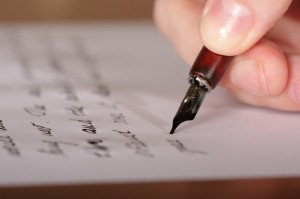600,000 reasons to hone PR writing skills


Almost as soon as the concept of on-line publishing became a reality, a bevy of self-appointed experts began to sound the death-knell for the traditional, printed word.
Well, I can provide 600,000 reasons why, like most experts of their kind, they were either somewhat premature – or simply wrong. Despite the explosive growth of web-based publishing – as evidenced by the incredible success of Bookboon – print magazines and newspapers are still with us.
Admittedly, some simply gave up what they considered to be an unequal struggle. Many more fight on with reduced circulations. However, contrary to all the predictions, a significant number have not only survived but are thriving, particularly those that have successfully converted themselves into print-web hybrids.
Take a look for yourself
Browse the magazine section at your local book shop, motorway service area or airport lounge. The racks are groaning under the weight of assorted volumes on topics as varied as sports and fitness to beer making at home. Perhaps ironically, a significant proportion of the glossier publications are devoted to web and computer technology; demonstrating that even tech-heads still prefer to get their most important information from the printed page rather than the screen
When you move into the realm of the trade and technical magazine sector, the survival and success of print publications is just as pronounced. The UK has a long history of technical and business magazine publishing and is still home to thousands of magazines aimed at B2B sectors. The picture is similar in other developed economies, particularly the USA and Germany where publishers have refined and developed their offering to meet the needs of the interconnected world.
The majority of people still read print magazines
In 2014, according to the UK Professional Publishers Association (PPA), there were more than 5000 Business to Business (B2B) magazines published in the United Kingdom. These were joined by in excess of 3000 Consumer magazines. Now, these are actual print publications, many of which also boast on-line versions. They serve a huge and loyal customer base: according to the PPA a staggering 87% of all adults in the UK claim to read magazines on a regular basis.
The US boasts over 7000 print magazines of all kinds. In 2012, perhaps surprisingly, more magazines were launched there than went out of business. In Germany, the magazine market encompasses some 6000 titles. So rude is the health of magazines around the world, in fact, that a PR database offered by Cision lists more than 600,000 print publications globally.
What does this mean for the aspiring PR writer? Well, for one thing, being able to compose a snappy 140 character Tweet may not necessarily be the most vital skill to acquire. Irrespective of their audience or circulation figures, these thousands of magazines share one significant attribute; a very tight budget. Consequently, no matter how glossy their cover, or how stellar their contributors their staff numbers are pared to the bone. Yet, thanks to the demands of a readership accustomed to 24 hour news feeds, their content has to be sharp, snappy and as current as possible.
Editors welcome PR input – as long as it’s the right standard
To fill the gap between expectation and achievement, they have to rely on other sources for information and input. Generally speaking, those other sources are company and agency PR people whom they can trust and whose material is of a sufficiently professional standard for them to be able to use it without too much editing or re-writing.
This situation is tailor-made for talented and ambitious PR writers to carve themselves a niche. But, and here I hark back to my reference to 140 character Tweets, to be successful they will have to do several things:
- Ensure that they have as good a grasp of whatever they intend to write about as any of the professional editors and journalists writing on the same topics.
- Be capable of identifying news and focusing their stories accordingly.
- Write clear, succinct news releases without any unnecessary padding or management-speak designed to make them appear more authoritative than they really are.
- Get to know their target magazines intimately; what kind of stories the editor prefers; what sort of topics she likes to highlight; her preferences when it comes to pictures and how she prefers the material to arrive on her desk.
- Always resist the temptation to fire off press releases like a farmer scattering seed.
Finally, read my book The Upside Down Guide to the Press to start the process of turning yourself into a successful PR writer.




